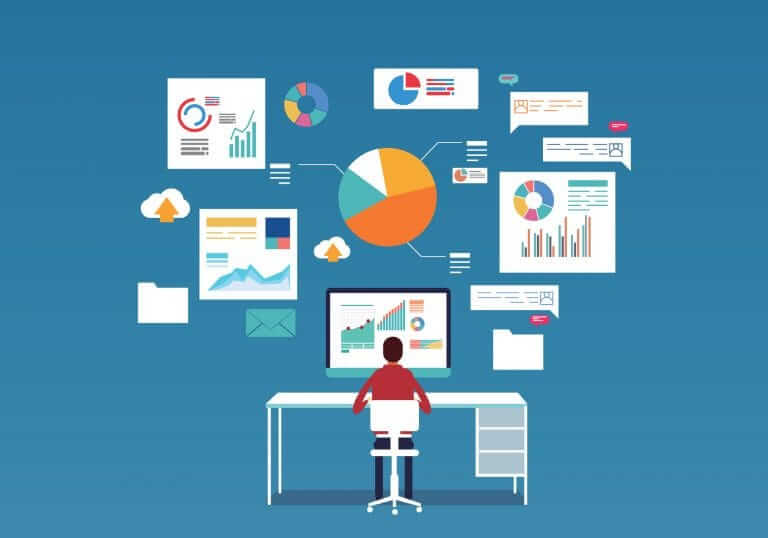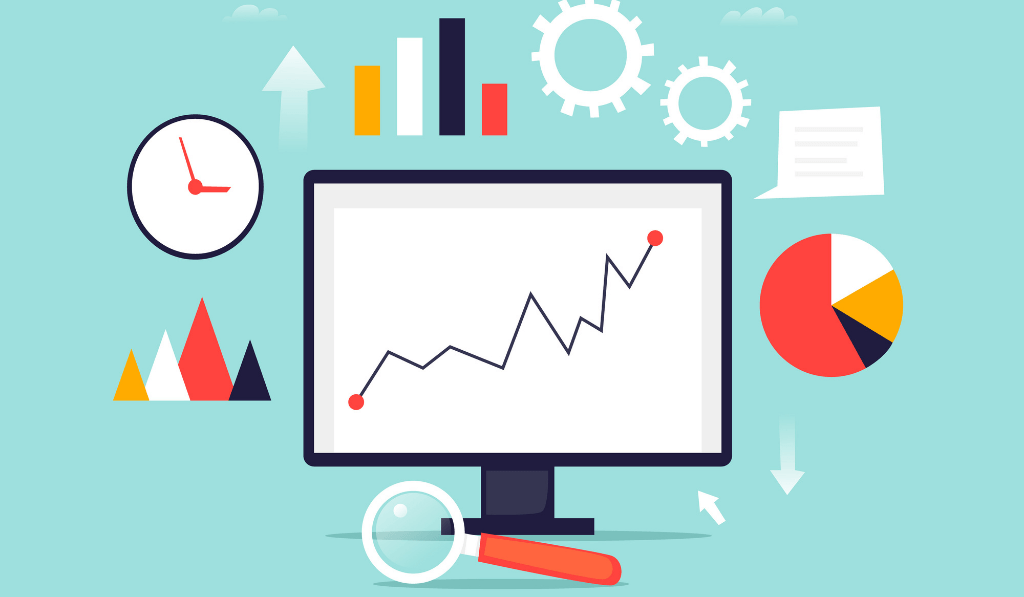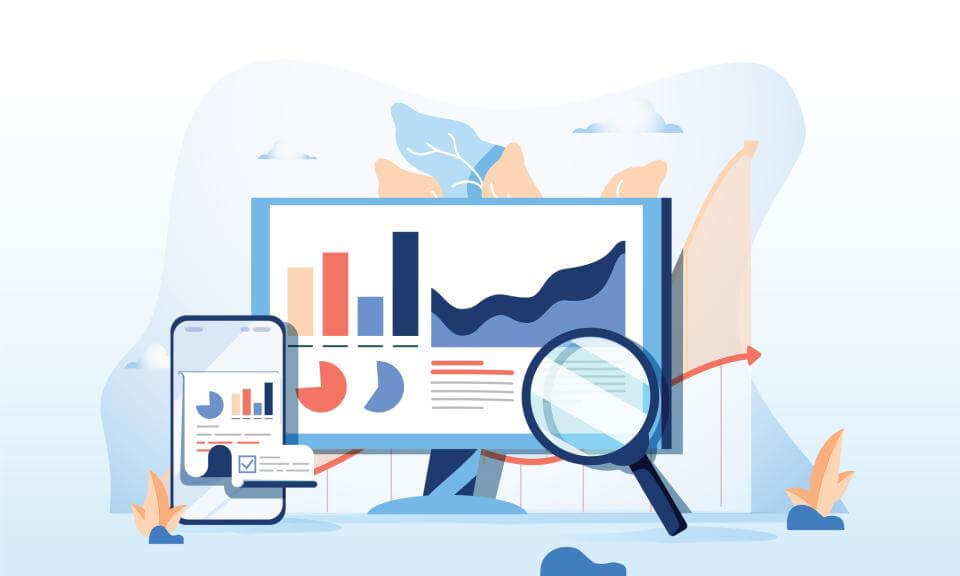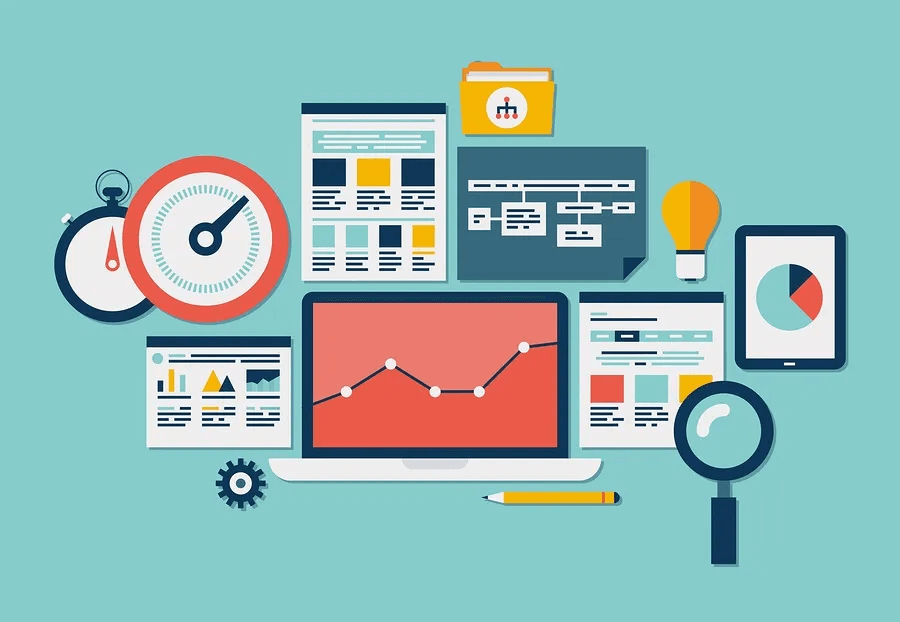Analytics is a critical component of logic, representing the doctrine of analysis—the process of breaking down a whole (whether a thing, property, process, or relationship between objects) into its constituent parts. This operation, carried out in the realms of knowledge acquisition or practical human activity, is fundamental to understanding and decision-making. In a more focused context (often referred to in English as Analytics), it involves the systematic numerical analysis of data to identify and interpret significant patterns. This practice is crucial in fields that generate vast amounts of data, relying heavily on the integration of statistics, computer programming, and operations research. Companies like Aristostar leverage these techniques to provide advanced analytics solutions, helping businesses make informed decisions and optimize their operations.
Types of Analytics
Analytics can be categorized into several types, each with unique attributes and applications:
Descriptive Analytics
This form of analytics answers the question, “What happened?” by summarizing past data to understand changes or trends. It helps organizations get insights from historical data, providing a clear picture of what has occurred over a specific period. Tools like data dashboards and scorecards are often used in descriptive analytics to display data in a visually engaging manner.
Diagnostic Analytics
Moving a step further, this type answers, “Why did it happen?” by examining data to uncover the causes of past events. Diagnostic analytics involves techniques such as drill-down, data discovery, data mining, and correlations to identify anomalies and relationships in the data. This type of analytics is essential for understanding the underlying reasons for trends and patterns.
Predictive Analytics
This forward-looking analysis answers, “What could happen?” by using statistical models and machine learning techniques to forecast future events based on historical data. Predictive analytics employs algorithms such as regression analysis, time series analysis, and neural networks to predict future outcomes. It’s widely used in various industries for applications such as risk management, marketing campaigns, and financial forecasting.
Prescriptive Analytics
This type of analytics suggests actions by answering, “What should we do?” It provides recommendations for handling potential future scenarios based on the analysis of available data. Prescriptive analytics uses optimization and simulation algorithms to advise on possible outcomes and provide decision options. It helps organizations not only anticipate what will happen but also determine the best course of action among various choices.
Cognitive Analytics
Leveraging advanced technologies like artificial intelligence and machine learning, this type seeks to emulate human thought processes to interpret data and make informed decisions. Cognitive analytics involves understanding context and intent, enabling systems to learn and reason, similar to human cognition. It is used in applications such as natural language processing, sentiment analysis, and automated decision-making.

Applications in Business
Analytics finds applications in numerous business domains, including:
Marketing
By analyzing customer data, market trends, and competitor strategies, marketing analytics helps in devising effective marketing campaigns and measuring their success. It involves segmentation analysis, customer behavior analysis, and campaign performance tracking to optimize marketing efforts.
Management
Management analytics supports decision-making processes by providing insights into operational efficiency, workforce performance, and resource allocation. Techniques such as performance metrics, efficiency analysis, and project management analytics help managers improve organizational effectiveness.
Finance
Financial analytics is crucial for assessing financial statements, forecasting financial performance, and making investment decisions. Financial analysts use various tools and models to evaluate profitability, liquidity, and risk, helping businesses make informed financial choices.
Information Security
Analytics in this field helps in identifying security threats, assessing risks, and implementing robust security measures. Security analytics involves monitoring network traffic, detecting anomalies, and predicting potential security breaches to protect organizational data.
Software Development
Software analytics assists in improving software performance, understanding user behavior, and optimizing development processes. It includes bug tracking, code quality analysis, and user experience analytics to enhance software products and services.

Techniques and Tools
To process vast amounts of data, analytics employs methods from computer science, statistics, and mathematics. Key techniques include:
Data Mining
Extracting patterns from large data sets. Data mining techniques such as clustering, classification, and association rule mining help uncover hidden patterns and relationships within data.
Machine Learning
Developing algorithms that can learn from and make predictions based on data. Machine learning models, including supervised and unsupervised learning, are used for tasks such as classification, regression, and anomaly detection.
Statistical Analysis
Applying statistical methods to interpret data. Techniques such as hypothesis testing, regression analysis, and variance analysis are used to draw meaningful conclusions from data.
History of Analytics
The evolution of analytics can be traced back through several significant milestones:
- 1785: William Playfair introduced the histogram, a fundamental tool for data visualization. His work laid the foundation for modern data visualization techniques, making it easier to interpret and communicate data.
- 1812: Charles Joseph Minard’s map depicting Napoleon’s army losses illustrated the power of data visualization in understanding complex events. Minard’s work demonstrated how visual representations could convey intricate data relationships effectively.
- 1890: Herman Hollerith’s invention of the tabulating machine revolutionized data processing, dramatically speeding up tasks like the US Census. Hollerith’s punched card system enabled large-scale data analysis and set the stage for modern computing.

Modern Developments
In the latter part of the 20th century and early 21st century, several advancements shaped the field of analytics:
- 1970s-1980s: The emergence of relational databases and the SQL programming language enabled more efficient data retrieval and analysis. These technologies provided the foundation for structured data management and querying.
- Late 1980s: The concept of data warehousing, introduced by William H. Inmon, facilitated quick and repeated access to stored information. Around the same time, Howard Dresner coined the term “business intelligence,” pushing industries toward more comprehensive data analysis.
- 1990s: The rise of data mining and the development of programming languages like R and Python enabled the handling of large data sets and the creation of complex visualizations. Data mining techniques and machine learning algorithms became essential tools for uncovering insights from big data.
- 2000s: Innovations in web search led to the development of tools like MapReduce, Apache Hadoop, and Apache Cassandra, enhancing data discovery, preparation, and presentation. These technologies allowed for the processing and analysis of massive data sets distributed across multiple servers.
Contemporary Use Cases
Today, analytics is indispensable across various sectors. In Dubai, for instance, the company Aristostar offers PixlSens, a tool designed for business analytics. This tool assists companies in following their strategic plans, identifying deviations in real-time, and making necessary adjustments. Effective use of analytics in understanding customer behavior, managing expenses and income, and assessing risks distinguishes leading companies from their competitors.
Financial Analytics
Financial analytics involves the detailed examination of financial data to inform decision-making. Financial analysts scrutinize financial statements, assess a company’s financial stability, and forecast future financial performance. Key tools and techniques include ratio analysis, trend analysis, and financial modeling. These analyses are crucial for investment decisions, budgeting, and strategic planning.
Marketing Analytics
Marketing analytics focuses on understanding market trends, customer behavior, and the effectiveness of marketing strategies. It involves the use of customer segmentation, campaign performance analysis, and market basket analysis to optimize marketing efforts. Marketing analytics helps businesses identify target audiences, improve customer retention, and enhance the return on investment (ROI) of marketing campaigns.
Business Analytics
Business analytics encompasses the collection and analysis of business data to support decision-making and improve operational efficiency. Techniques such as process mining, supply chain analytics, and performance management are used to identify inefficiencies, optimize processes, and enhance overall business performance. Business analytics provides actionable insights that drive strategic and tactical decisions.
Data Analytics
Data analytics involves examining large volumes of data to uncover patterns, trends, and correlations. It employs statistical and computational techniques to process and analyze data from various sources. Data analytics is used in fields such as healthcare, where it helps in diagnosing diseases, and in retail, where it informs inventory management and customer personalization.
Conclusion
Analytics, rooted in the logical doctrine of analysis, has evolved into a sophisticated field that intersects with numerous scientific disciplines. Its application in business and other areas is crucial for making informed decisions, predicting future trends, and maintaining competitive advantages. As technology continues to advance, the role of analytics in our data-driven world will only become more integral, driving innovations and efficiencies across industries.
Whether through financial, marketing, business, or data analytics, the ability to interpret and act on data insights is vital for success in today’s complex and fast-paced environment. Companies that leverage analytics effectively are better positioned to anticipate changes, adapt strategies, and achieve sustained growth. As we move forward, the integration of artificial intelligence and machine learning will further enhance the capabilities of analytics, opening new frontiers for data-driven decision-making.

Cyclist, vegan, music blogger, hand letterer and ADC member. Producing at the nexus of design and elegance to craft experiences both online and in real life. German award-winning designer raised in Austria & currently living in New York City.
